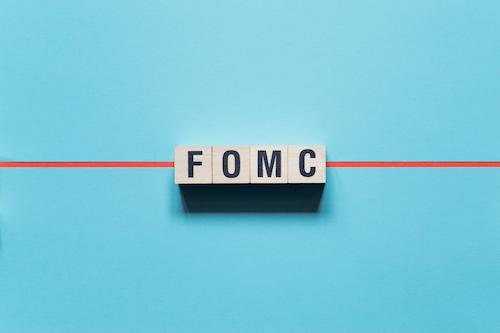
FOMC Rate Rise Sees Equities Rise and Fall, While Gold Does the Opposite
Shakespeare said it all – ‘ Beware the Ides of March’ – and it was indeed on the 15th March that precious metals continued the big price dip which had already commenced towards the end of the week prior.
Precious metals prices had initially soared when Russia invaded Ukraine – probably too far too fast as is usually the case with ‘black swan’ price spikes of this nature. But, the falls as we have seen over the past few days of trading have been overdone too, and are already seeing a recovery. This will have followed further consideration of the likely effects on inflation of the enhanced Western sanctions designed to cripple trade with the aggressor nation. Wars tend to come to a negotiated truce, but the huge inflation levels being experienced globally may well have a greater long term impact on precious metals prices than the war itself.
The latest FOMC meeting deliberations are now behind us, and in response to the most recent inflation data, which seems to be continuing to move onwards and upwards, this august body has, in its collective wisdom decided to impose a rather paltry Federal Funds interest rate increase of only 25 basis points at this time. This is insufficient to have any impact at all on the current inflation rate and certainly led to a sigh of relief from the business sector which initially saw equity prices make quite a decent recovery in response. True, the Fed’s interest rate move will almost certainly be followed up with perhaps six or so more similarly-sized interest rate increases this year, but with the latest Producer Price Index (PPI) figure released this week pointing to a double digit annual inflation rise, even this looks unlikely to have any definitive impact on overall inflation this year, nor perhaps even next.
Indeed the chances are that the inflation rate will continue to increase. Energy costs are the biggest element in the inflation rise being experienced by the American consumer and these remain under considerable pressure as an indirect result of the unprecedented sanctions program being imposed on Russia. That country is among the biggest global exporters of oil and natural gas, and although the US is largely self-sufficient in these and therefore not totally dependent on Russian supplies, as is much of continental Europe, the effect of the Russian sanctions on global energy prices is far from insignificant, even in the US.
Furthermore, Russia and Ukraine are also major global suppliers of key foodstuffs like grain and sunflower products, and the former among the biggest global suppliers of precious and some key industrial metals. If the imposed sanctions on trade with Russia prove to be effective as the year progresses, this could lead to a whole host of supply issues for many of these products which would lead to higher input prices and more corresponding output price, and inflation, pressures.
Gone are the days when the US maintained a substantial stockpile of strategic metals and minerals. The move to free trade, even with countries like Russia and China which have been suspected of harboring long term ambitions of superseding the US as the dominant entity in global trade, has made the US hugely vulnerable to experiencing key supplies being cut off when rival superpowers may wish to challenge the US’s dominant position. The dependence on key strategic supplies from potential competitor nations cannot be reversed quickly, nor without experiencing considerable costs and/or much higher prices for these products. Maybe Russia’s invasion of Ukraine will cause a policy reversal here, although that will probably be too late. The world order is changing, and not in America’s favor!
Markets are prone to knee-jerk reactions to economic events and we have certainly been seeing this in the immediate aftermath of the latest Fed moves. The Fed has certainly not had a great record in its economic projections to date, so Fed chair Jerome Powell’s comments that he expects inflation to come down below 5% in the second half of the year should perhaps be viewed in the same light as his comments ,up until November last year, that any rise in inflation was purely transitory as the world exited from the coronavirus pandemic. This certainly hadn’t been the case even before Russia invaded Ukraine and the West’s subsequent economic response has added a whole host of new inflationary factors into the equation. This writer’s view is that inflationary pressures will remain elevated – probably well into next year and perhaps beyond – and the Fed’s cautious approach to tapering, balance sheet reduction and interest rate rises will do virtually nothing to halt this overall trend. High inflation – or to put it another way a substantial decline in purchasing power of the dollar – will remain with us for the foreseeable future.
Can we do anything to protect ourselves from what is rapidly becoming a fact of life? The usual hedge against declining wealth – equity investment – may well not be effective as business profitability will be under pressure from Fed tapering and even small rises in interest rates. Arguably, most stocks are currently overvalued – particularly in the tech sector. Bitcoin, which has little or no substance behind it, could well crash. Real interest rates will remain negative – perhaps increasingly so – making fixed interest savings a losing bet too.
Assets like gold, which tend to retain their value and move up as the dollar falls in value, perhaps offer some wealth protection promise, as they have in the past, but even these could well see short term declines as investment entities struggle to remain in business and need to sell good assets along with weaker ones to stay afloat. But we suggest one holds one’s faith in such assets. They may not be a perfect remedy but at least should keep a decent proportion of one’s wealth intact whereas general equity investments and bitcoin could leave you with next to nothing if markets really crash as some are predicting!
Today things seem to be beginning to work out as we suspect they might, Precious metals look to be making something of a recovery while equities and bitcoin are looking potentially weaker. Real interest rates are distinctly in negative territory which tends to be positive for assets like gold which are not interest generators anyway.
The exception to any fall in general equities tends to be the precious metals stocks which will perform better as higher metal prices improve their profitability and make dividend increases more likely. Most major dividend-paying diversified gold stocks, for example, are highly profitable at current gold prices and look to advance payments to shareholders thus bucking the general trend. Dividend yields also tend to be above average too.
So there are indeed ways to protect your wealth, but make sure you do your due diligence before making any hasty investments – always a wise path to follow.






